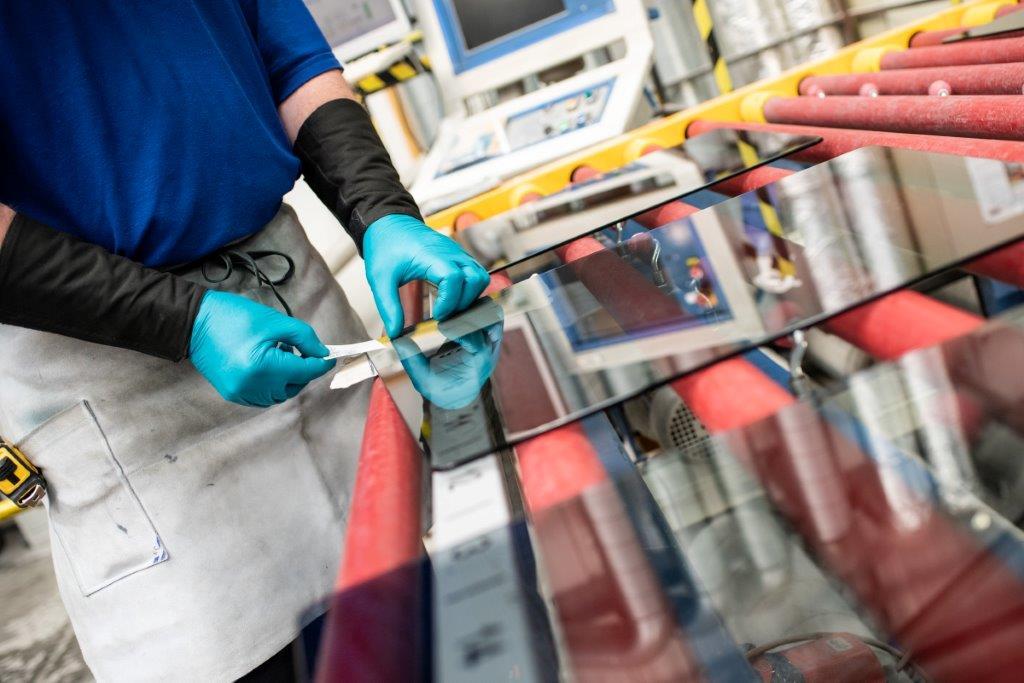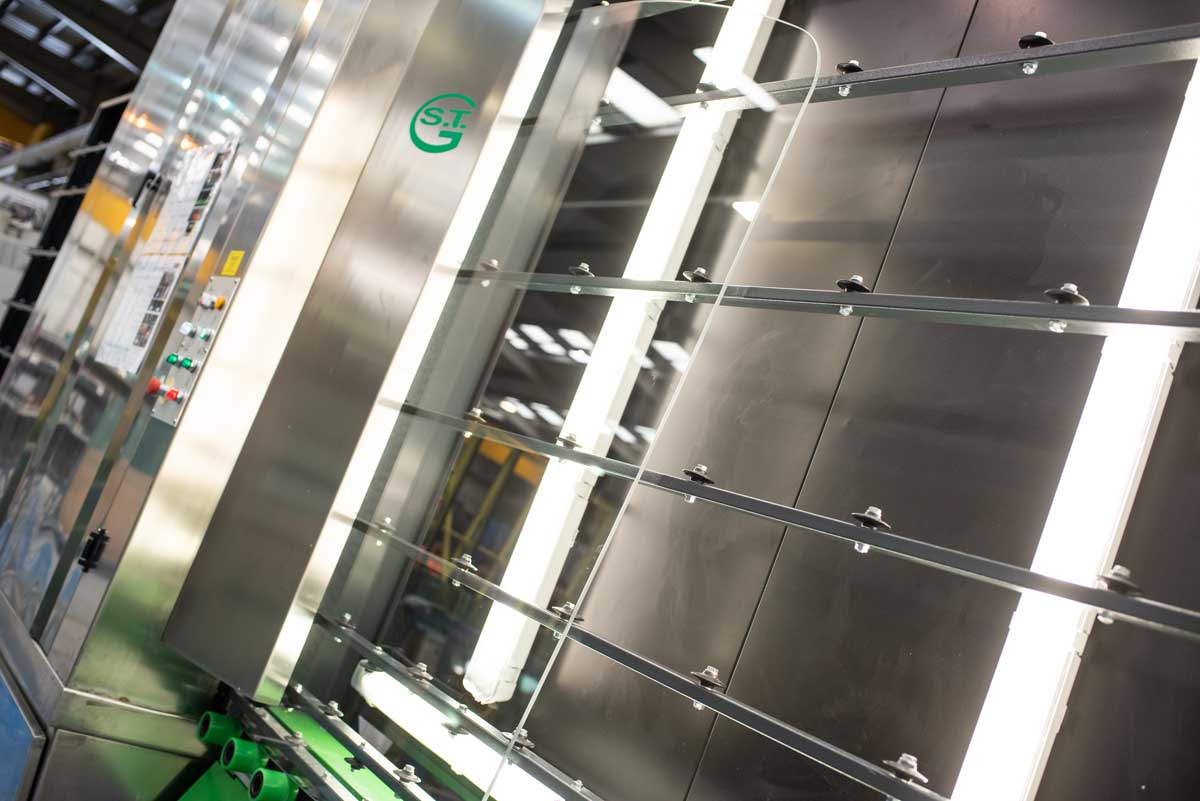
Glass processing today takes an immense amount of skill. The demand for specialist glass has risen as architectural and security requirements have grown. Flat glass is processed on-site here using a variety of technologies and processes. This guide will help you understand the processes in more detail.
Annealed Glass
Annealed glass is alternatively known as float glass. The annealing process occurs in the latter stages of glass production, where the glass is cooled slowly to remove internal stresses. The process makes the glass resistant to temperature fluctuations, yet unable to cope with impact or stress.
When broken, annealed glass breaks into shards, which makes it unsuitable for areas in the home where serious injury could occur in the event of breakage, such as bathrooms, balustrades or large window panes and doors. However, it is still the most commonly used glass type for laminated applications where toughened glass is unsuitable, such as vehicle windscreens.
Heat-strengthened glass
Heat-strengthened glass is semi-toughened glass that is approximately two times stronger than annealed glass. At the start of the process, annealed glass is fed into the toughening line and heated to approximately 650°C, then force cooled slowly to create surface and edge compression.
The slow cooling process means the glass is strong enough to resist wind pressure and thermal stresses and when broken the glass shards are more equal in size than annealed glass and therefore more likely to stay together in the frame.
Romag can heat strengthen glass from 3mm, and whilst it is less commonly used than toughened glass due to its reduced comparative strength, it can be useful in applications where the breakage pattern is more desirable than fully toughened glass. Heat strengthened is becoming more popular in laminated balustrades due to the linear breakage.
Thoughened Glass
Toughened glass is approximately five times stronger than annealed glass. As with heat strengthened glass, the glass is fed into the toughening line and heated to approximately 650°C. The process differs at the cooling point.
Toughened glass is rapidly cooled using blasts of cool air from above and below the glass – a process called “quenching”. Quenching cools the outer surfaces of the glass much more quickly than the centre. As a result, it creates a surface compression of at least 10,000 psi, which gives toughened glass its strength.
It is difficult to break toughened glass; however, when breakage occurs, it fractures into small, cubic pieces that are much less likely to cause injury. Its unique breakage pattern makes it suitable for a broad range of safety applications for architecture and transport. Balustrades, glass facades, passenger vehicle windows and many other products typically utilise toughened glass. It’s suitable for laminating into other, more complicated constructions, and other technologies can be applied to make a highly durable building material.
Laminated Glass
Laminated glass is made by sandwiching one or more layers of annealed, heat-strengthened or toughened glass using a specialist interlayer such as polyvinyl butyral (PVB). The glass is prepared in our state-of-the-art clean rooms and then bonded via heat and pressure in our specialist ovens and autoclaves.
The flexibility and physical strength of laminated glass make it a highly versatile product that can be utilised for many diverse applications. The PVB allows the glass to absorb energy. It also naturally absorbs and deflects up to 99% of ultraviolet light, making it highly efficient against glare.
Laminated glass is typically used in architectural applications such as balustrades, facades, flooring and canopies or glass roofs due to its structural integrity. It can also be used for transport applications such as windscreens and vision panels for rolling stock, military and agricultural vehicles among others. Where laminated glass truly shines is in its use as physical security and bullet resistant glass. See our videos of security glass in action to see its capabilities.
Such is the versatility of laminated glass that aesthetic interlayers such as vibrant colours and printed interlayers can be used. This makes it highly desirable for artistic sculptures and modern architecture. Complex curves are also achievable for a range of applications.
Romag can process laminated glass from 6mm to 185mm in thickness.



.jpg)